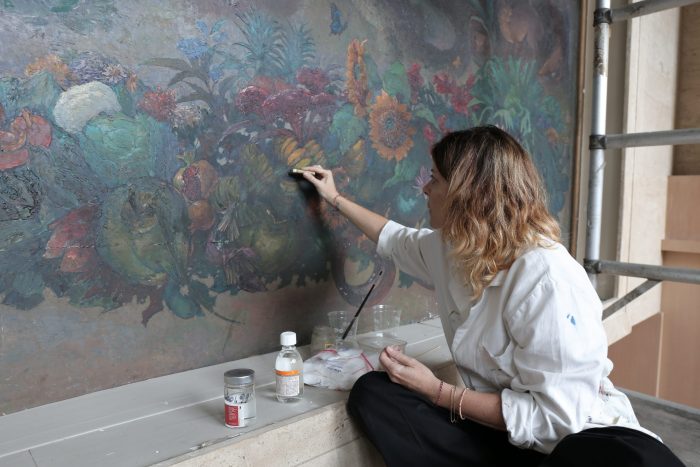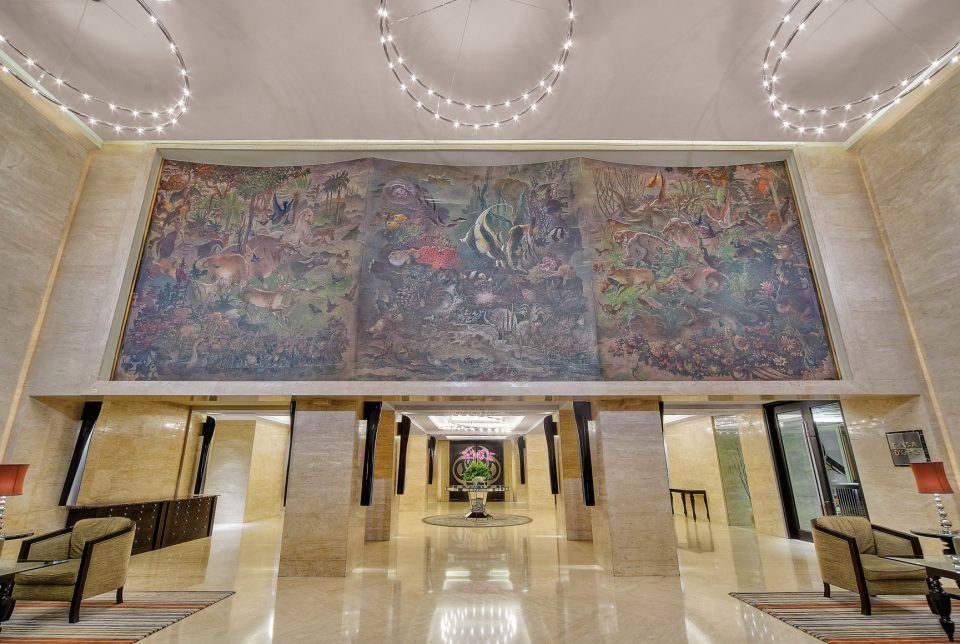Hotel Indonesia Kempinski Jakarta has restored the phenomenal painting of Lee Man Fong entitled “Margasatwa dan Puspita Indonesia” (1913–1988).
As an act of preserving cultural heritage, this 4 metres x 10.85 metres painting and one of the world’s largest paintings, consists of three rather curved panels depicting the rich flora and fauna in Indonesia. Located at the top of the wall facing the entrance foyer of the Bali Room at Hotel Indonesia Kempinski Jakarta, this painting began its restoration in July 2019 and is now completed.
The physical condition of the “Margasatwa dan Puspita Indonesia” painting was affected after Hotel Indonesia underwent several renovations until finally, Hotel Indonesia decided to restore the painting through a professional painting restoration process. Therefore, Italian restorer who opened a restoration studio in Indonesia named Michaela Anselmini has taken the task of conserving and restoring this masterpiece painting by working very carefully and not changing the original work.
First opened and inaugurated by President Soekarno or Bung Karno on 5 August 1962, Hotel Indonesia has been designed as a modern hotel that reflects the beauty of the archipelago’s charm and cultural diversity in Indonesia. One of the hotel walls is still displaying several works of Indonesian artists, including this particular one by Lee Man Fong.


Visit kempinski.com/jakarta for more information.




